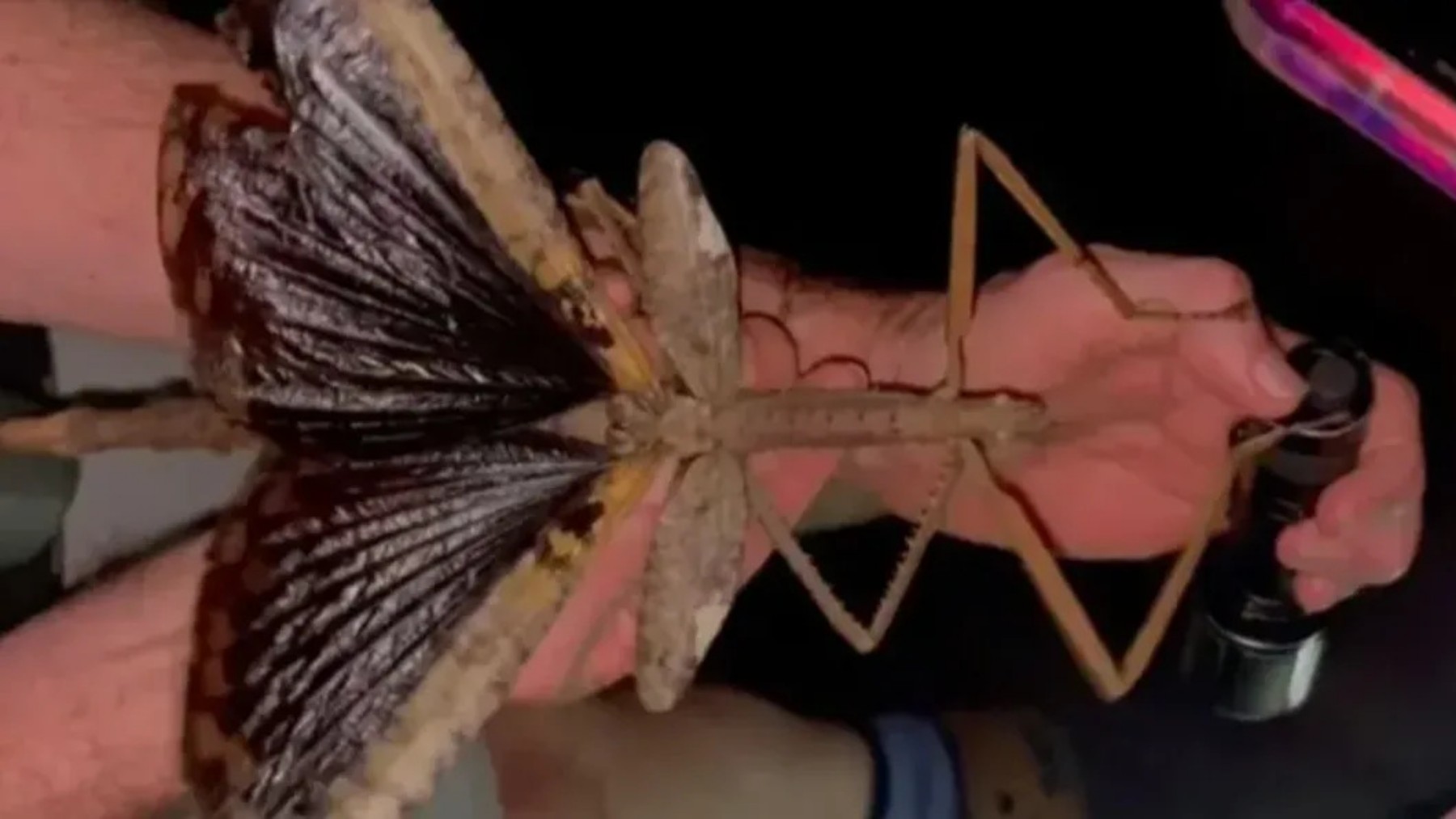Nature never ceases to amaze us. At the top of the canopy of the Atherton Tablelands, a tropical highland in tropical Queensland, Australia, a specimen of Acrophylla alta has been found. This is a giant stick insect measuring 41 centimeters and weighing 44 grams, the heaviest in Australia. According to Angus Emmot, a former researcher at James Cook University in Australia, “There are longer stick insects out there [in the region], but they have a rather light body. […] As far as we know to date, this is the heaviest insect in Australia”.
It was entomologist Ross Coupland who spotted the specimen and recruited Emmot for his research. According to experts, the unusual weight of the insect may be due to its need to adapt to the cold and humidity of the tree canopies, its habitat. However, more research would be needed to confirm this. The complete discovery can be found in Zootaxa.
Acrophylla alta
It is a species found in the high rainforest in tropical Queensland in Australia. It makes its home in the Atherton Tablelands, high above, in old trees up to 100 feet (300 meters) tall. Unlike the rest of stick insects, this rediscovery has gone viral given its physical characteristics. It is a specimen of 44 grams (1.6 ounces), and a length of 16 inches (41 cm). It has been equated in weight to that of a golf ball, and its size exceeds the size of an average human forearm.
According to Angus Emmorr, a retired former natural scientist at Australia’s James Cook University, “There are longer stick insects out there [in the region], but they have a fairly light body”. He added, “From what we know to date, this is the heaviest insect in Australia”.
Habitat changes
The difficulty of accessing some regions means that many species are never discovered or cannot be studied in full. Atheron is a tropical region where climatic events like storms can wreak havoc. As we mentioned, the A. alta makes its home in elevated area trees, but these types of environmental phenomena often shake them down to lower areas. The camouflage ability of this species makes it incredibly hard to identify, but this time the amateur naturalists got lucky.
The specimen was discovered by Ross Coupland, who recruited Elmmott to delve deeper into the research. They managed to collect some specimens, and even some of their eggs for research. According to Emmott, “Each species of stick insect has its own distinct style of egg. […] All have different surfaces and different textures and punctures, and may come in different shapes. Even the caps are very unique”.
An unusual weight
So far, researchers have not been able to explain the weight of the specimen found. One of the theories proposed is that it may have developed as a survival method. The canopies of the Atherton trees have cool, humid conditions and are stirred when there is a storm. However, with the weight of A. alta, it is believed that the insect adapts better to those conditions, reducing the speed at which it loses energy due to increased body fat. Nevertheless, this is just a theory that does not yet have sufficient data. We will have to wait for the research to continue to see if there is data to support it.
The research also points out that, contrary to what humans often believe, we do not know all the secrets that nature holds.According to researchers, “The discovery of a new species of insect of such large size is a testimony to the importance of protecting the remaining biologically diverse habitats and ecosystems, as there may be other phasmid species and other insects waiting to be discovered and described within them.” The study has been published in Zootaxa.





